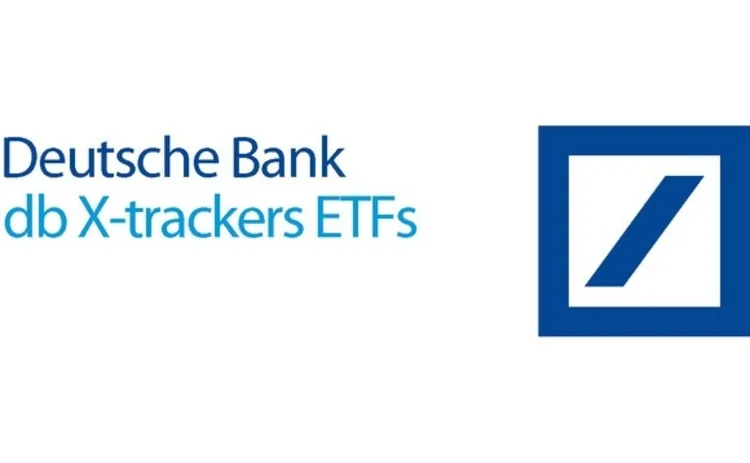
Sponsored feature: Deutsche Bank X-trackers ETFs

Exchange traded funds (ETFs) in Asia are still a relatively underdeveloped business. Although Hong Kong saw its first ETF in 1999, the products have only really found favour with investors since the financial crisis. Meanwhile, in the US and Canada – the latter being where the products originated – ETFs have already been around for about 20 years and in large volumes. The global business is worth $1.39 trillion annually, and Europe, like North America, is a well developed market.
Market participants say assets under management in Asian ETFs account for only about 6% of the global total. The more mature European and US markets have a large number of providers offering ETFs in several countries, while the Asian market is more fragmented – for example, Hong Kong has 13 firms selling ETFs but few of them offer ETFs also out of Hong Kong. This means local competition is intense among the many ETF product providers trying to get a share of the rapidly growing Asian market.
Unlike the US, and more similarly to Europe, growth in the Asian market is less driven by retail and more by institutional investors. Some people estimate that 80% of ETFs in Asia are bought by institutional investors, with retail investors accounting for 20%. Whereas, in the US, retail comprises 50% of the market. Asia’s breakdown is considered similar to that of Europe. Many institutional investors use ETFs to make tactical asset allocations, the rationale being they can react quickly and gain exposure when they see an opportunity or trend in the market. ETFs are also relatively cost-effective employed in this way. Meanwhile, for emerging markets, ETFs provide a quick and cheap way to access those markets that are otherwise difficult to access and in which individual stock-picking is tricky.

Inaugural Asian ETF survey
The views and investment patterns of institutions in the Asian market are not particularly transparent. The inaugural Asia Risk user survey on ETF trends, in partnership with Deutsche Bank, is the first survey of its kind in the region. It aims to find out exactly how Asian institutions see ETFs, shed some light on the development of the sector and, hopefully, point distributors towards ways they can better serve their clients.
One of the strongest themes to come out of the survey seems to be the need for educating investors, not just about the benefits of ETFs, but also how they work – the responsibility for which falls to all the stakeholders in the market. “The fact that more than 50% of the investors ignore or don’t care that US-listed ETFs may have a tax disadvantage on the dividends they pay is a clear example that there is still a lot to do [see figure 1],” says Marco Montanari, head of ETFs at Deutsche Bank in Hong Kong. “The market is young, but this is good because the potential is huge. At the same time, there is a lot of educating of clients that needs to be done. We need more providers to do the same and more media coverage to help.”
In their original format, ETFs started off as simple trackers but have diversified into a bewildering array of underlying asset classes and structures, highlighting the need for more education for investors. It is even more obvious in Asia where investors are having to rapidly come up to speed with the latest forms of the structures. Meanwhile, globally, debates are ongoing about tracking error, counterparty risk, and the use of derivatives and securities lending. This further reinforces the idea that potential Asian investors have much to learn in order to fully unlock the potential of the ETFs.
Equity investment patterns
One of the most striking things about the investment patterns of Asian ETF users are the high levels of equity investments. The survey suggests 91% of Asian investments are based on equity (see figure 2). In Europe and the US, the figure is thought to be closer to 60%–70%. Previously, investors have noted that Taiwan, Korea, Indonesia, Malaysia, Philippines and Thailand are popular investment plays, with hedge funds especially active in these markets.
A possible reason for investing in Asian equity ETFs listed in Asian stock exchanges could be the tax disadvantage of using some extra-regional ETFs. “Few US ETFs are listed in Hong Kong and Singapore because when a US ETF pays a dividend there is, generally speaking, a 30% tax on the dividend imposed by US tax authorities, so it arrives in Asia net of the tax applied,” says Montanari. It may also be that Asian investors are simply not yet aware of the options beyond equity. Although, more recently, commodity plays may have been gaining traction. Christine Huang, vice-president responsible for sales and marketing of ETFs at Lyxor in Hong Kong, recently told Asia Risk that “at the moment, investors are talking about inflation, so the commodity-based ETF is being used as a perfect hedge, especially with the recent turmoil in the Middle East, and people are worried about the oil price too”.
Future of ETF investment
The results of the survey are similarly clear in showing that 55% of Asian institutional investors are now holders of some portion of ETFs (see figure 3). However, the majority of these – 35.5% – invest less than 5% of their overall assets. It is worth noting the sheer size of institutional funds in the region, with 31% of respondents holding in excess of $1 billion (see figure 4), which points somewhat to the region’s potential. Only a tiny percentage – just 4% of respondents – said they had not invested in ETFs at all during the last year. However, the amount invested in ETFs in the region looks set to grow – 65% of respondents said they planned to increase their ETF investment. Interestingly, the biggest single factor that held them back from investing in ETFs was not having found the right product, eclipsing both liquidity and counterparty concerns (see table A).
As Montanari notes, there are two main reasons why Asian ETF users cite ‘not being able to find the right product’ as a factor. The first reason is investors are not fully aware of the products available in the market. He refers to respondents requests for new products as an example, as a number of them are already available in the market, such as sector ETFs and food commodities ETFs (see figure 5). He says the second reason may be that providers tend to avoid issuing ETFs linked to illiquid markets, because the liquidity of an ETF mainly depends on the liquidity of the underlying market. Effectively, if the underlying market cannot be traded in real time then it is difficult for a bank to put together an ETF. “Liquidity is the most misunderstood concept in the ETF space in Asia, and investors tend to think that the ETF’s liquidity is independent from the underlying market,” says Montanari.
Reasons for choosing an ETF
Liquidity also features highest on the list of most important factors investors look for when choosing an ETF (see table B), suggesting a strong need for continued education efforts. “Liquidity should rank last among the criteria for an institutional investor to choose an ETF because the ETF liquidity will not depend on the ETF provider but on the underlying market liquidity, which is the same for all ETFs exposed to the same underlying,” says Montanari.
Investors say they rank low fees and tracking error as the next two most important things they look for when choosing an ETF, which also points to the continuing need to educate investors. Montanari says, in his experience, investors in Asia would pick an ETF with 0.5% fees and 1% tracking error on top of the fees over an ETF with 0.6% fees and no tracking error “even if the second ETF is better than the first”. “Generally speaking, investors in Asia care too much about fees and too little about tracking error. This is again a misconception that will need time to be fixed. The fees are easy to check but to check the tracking error, investors need to do some work.”
Another interesting feature of the results was the weighting given by respondents to access products (see figure 6). Institutions rank the use of ETFs much more highly for strategic or tactical asset allocation purposes – 54% and 53% respectively – while use as an access product or as an alternative to derivatives was ranked much lower – 33% and 17% respectively. However, according to Montanari, ETFs are used as access products mainly for China A-Shares and India. “I’m actually surprised that the percentage of investors using ETFs as access products is so high. In the US or Europe, I would expect to see a larger majority of investors buy ETFs for strategic or tactical asset allocation purposes. This also shows that ETFs are still not fully understood by Asian investors,” he says.
Challenges for Asian ETFs
It is clear the Asian market faces substantial challenges – its fragmented nature makes standardising ETFs difficult. The debate over physical and synthetic format is still a topic of discussion, but providers have been increasing their efforts in terms of disclosure and transparency. Besides, among the unresolved hurdles, the misunderstanding of ETFs’ liquidity is still the most difficult to overcome.
Whatever challenges the region may face, with Asia currently representing about 30% of the global economy and the region a substantial driver of global growth, plus given that the region’s investors are yet to fully exploit ETFs, it is clear the importance of Asia in the global ETF picture is set to grow.
Click here to view the full article with graphs in PDF format.
Sponsored content
Copyright Infopro Digital Limited. All rights reserved.
You may share this content using our article tools. Printing this content is for the sole use of the Authorised User (named subscriber), as outlined in our terms and conditions - https://www.infopro-insight.com/terms-conditions/insight-subscriptions/
If you would like to purchase additional rights please email info@risk.net
Copyright Infopro Digital Limited. All rights reserved.
You may share this content using our article tools. Copying this content is for the sole use of the Authorised User (named subscriber), as outlined in our terms and conditions - https://www.infopro-insight.com/terms-conditions/insight-subscriptions/
If you would like to purchase additional rights please email info@risk.net